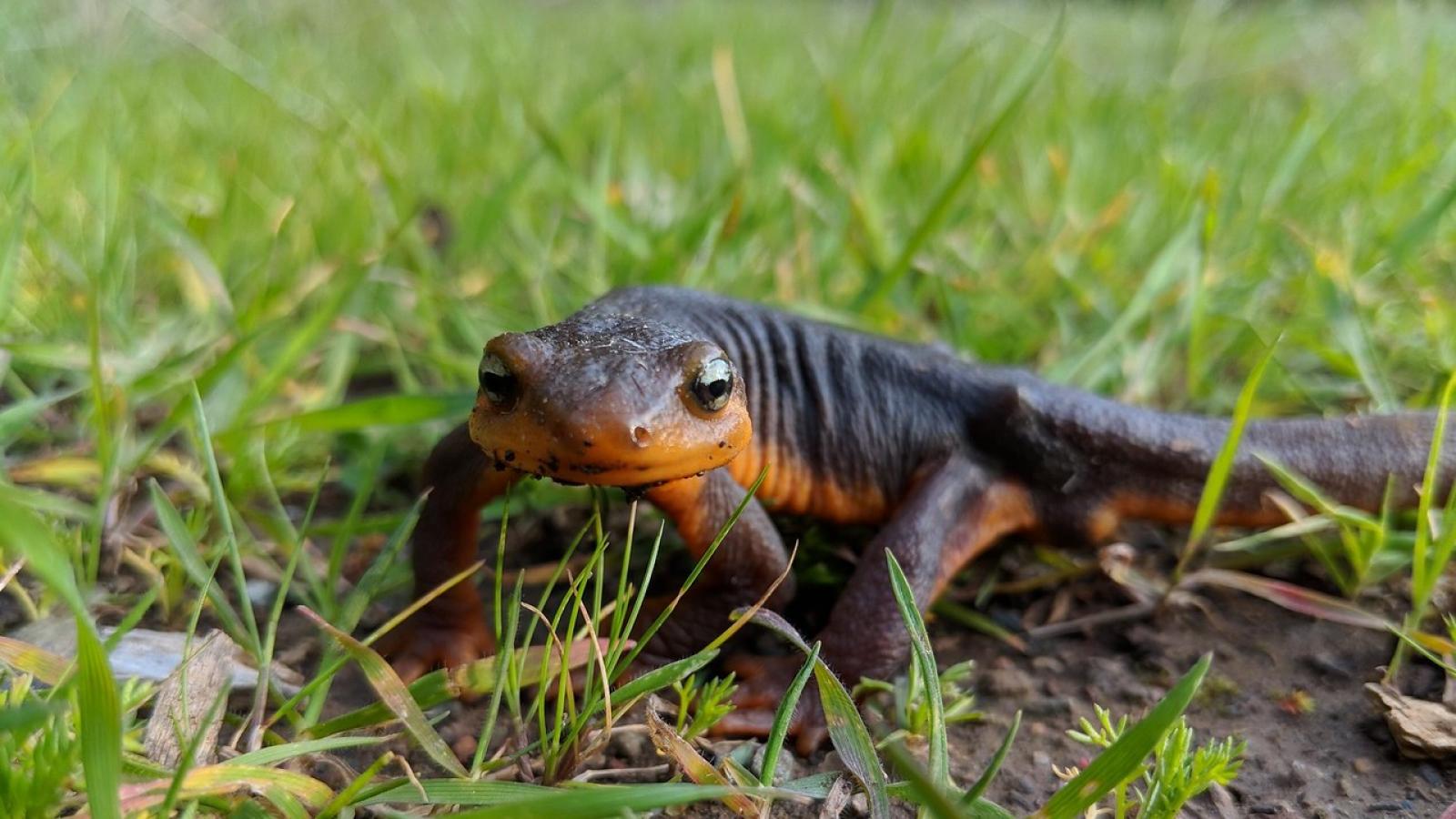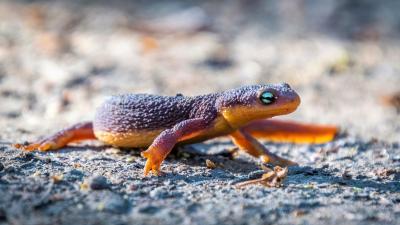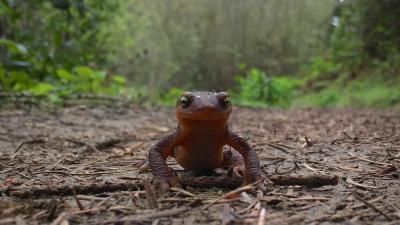Two species of newts can commonly be found in Midpen preserves: the California newt (Taricha torosa) and the rough-skinned newt (Taricha granulosa). Here is how to tell the two very similar-looking newt species apart:
Image
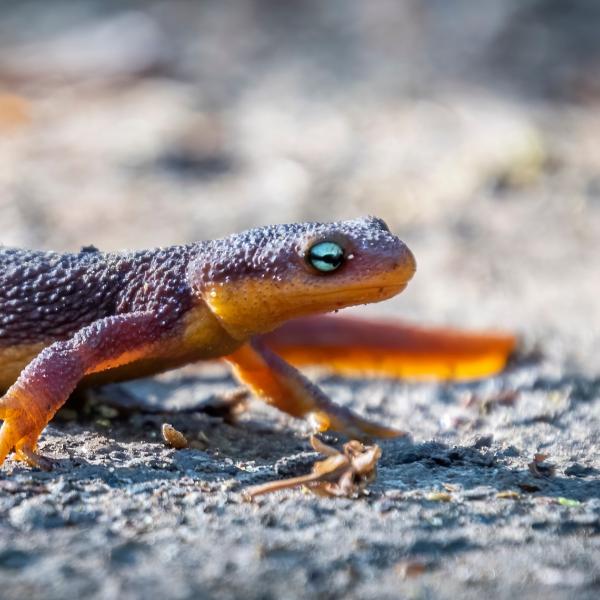
Rough-Skinned Newt
- Has gray skin at the bottom of its eye
- Has eyes that do not protrude beyond the edge of the jaw line when viewed from above
- Tail curls over when newt adopts its defensive posture.
- Lays eggs singly
.
Image
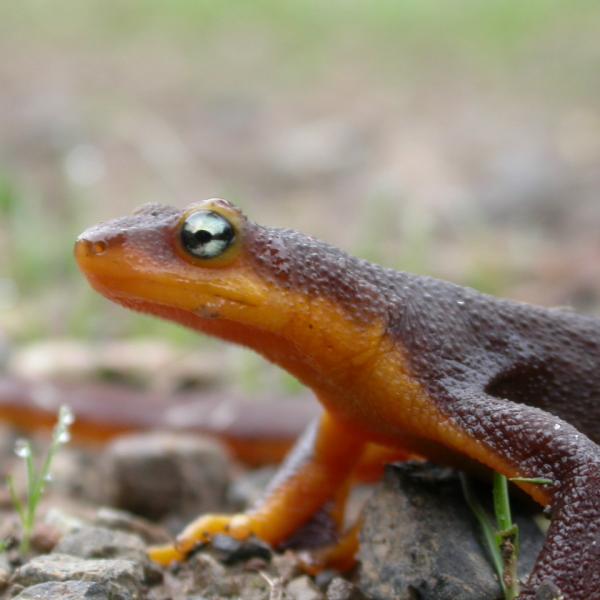
California Newt
- Has orange skin around the bottom of its eye
- Has eyes that protrude beyond the edge of the jaw line when viewed from above
- Tail bends back/sticks straight backward when the newt adopts its defensive posture
- Lays eggs in masses
Alma Bridge Road and Newts
Midpen partnered with Peninsula Open Space Trust and other agencies to conduct a newt population and road-related mortality study along Alma Bridge Road near Lexington Reservoir from November 2020 to March 2021. The research report estimates that, of the nearly 14,000 adult California newts that attempted to cross the road from their dry-season upland foraging habitat to their rainy-season breeding grounds during the survey period, almost 40% were killed by vehicles.
If I see migrating newts on the trail, what should I do?
- Do not remove newts. They do not make good pets and they secrete a powerful neurotoxin through their skin to repel predators. This poison can cause death in many animals, including humans, if ingested.
- Do not handle local newts, instead pass slowly and alert other trail users. Although some newts are not able to successfully cross a road or trail, many do make it as evidenced by the ongoing migrations seen each year.
- Report newt observations using community science tools such as iNaturalist, which Midpen uses along with other sources to determine where migrations occur and to identify areas of conflict where dead newts are observed.

